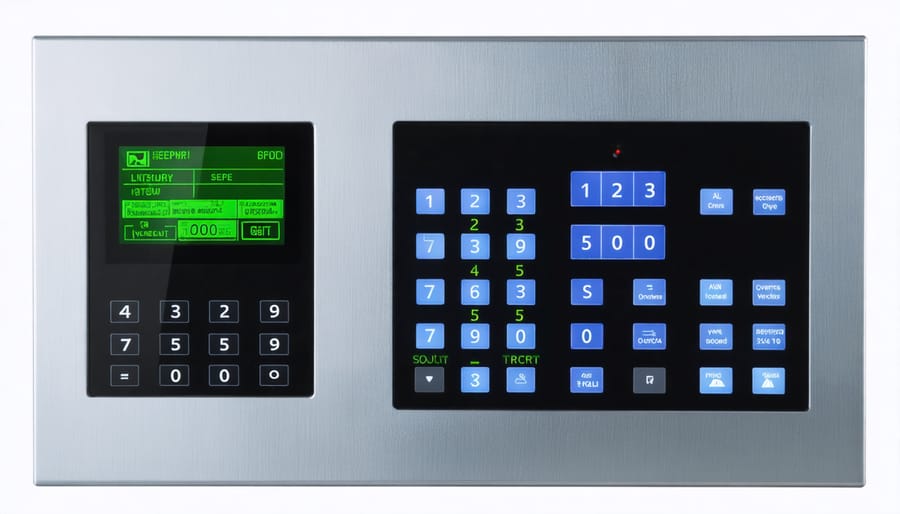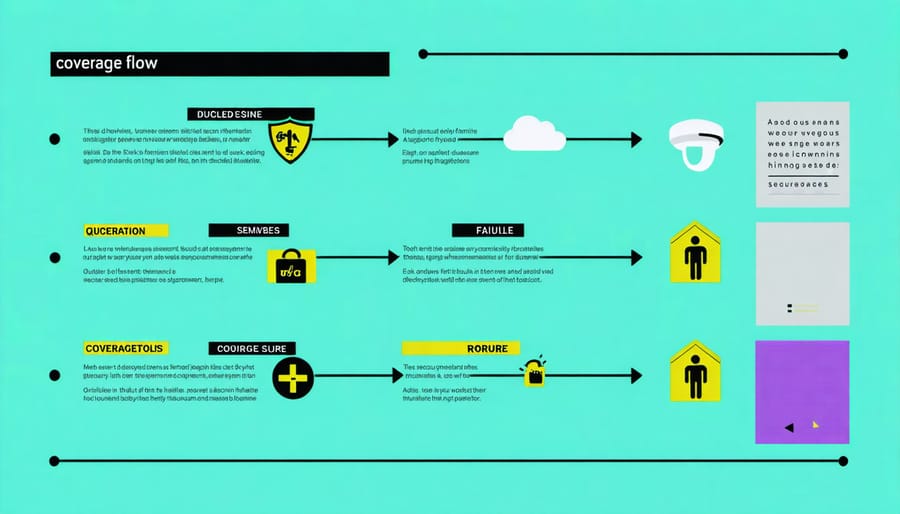Imagine losing thousands in property damage, only to discover your security system failed – yet your insurance still covers every penny. That’s the power of no-fault policies, a game-changing approach to property protection that’s revolutionizing how we think about security and insurance. Unlike traditional policies that may deny claims when security systems malfunction, no-fault coverage ensures property owners remain protected regardless of system performance or human error.
For real estate professionals and property owners navigating today’s complex security landscape, understanding no-fault policies isn’t just smart – it’s essential. These policies bridge critical coverage gaps, protecting against everything from sophisticated cyber breaches to simple equipment failures, without the typical finger-pointing that often delays or derails claims.
Whether you’re managing multiple properties or securing your own home, no-fault coverage offers peace of mind in an increasingly unpredictable world. Let’s explore how these innovative policies work, what they cover, and why they’re becoming the gold standard in property protection.
Understanding No-Fault Security System Coverage

Key Components of No-Fault Policies
A comprehensive no-fault policy typically includes several essential components designed to enhance your property risk management strategy. The primary coverage element is compensation for losses resulting from security system failures, regardless of who’s at fault. This includes protection against theft, vandalism, or damage that occurs when alarm systems, surveillance cameras, or access control mechanisms malfunction.
Most policies feature specific monetary limits for different types of losses, typically categorized as personal property, business assets, and structural damage. They often include coverage for emergency response costs, temporary security measures, and system repairs or replacements.
Another key component is liability protection, which safeguards property owners against potential lawsuits from affected tenants or visitors. Many policies also offer business interruption coverage, compensating for income loss during system downtime.
Standard terms usually specify a deductible amount, claim filing deadlines, and requirements for system maintenance and documentation. Some policies include additional benefits like cybersecurity protection and professional security consultation services.
Common Misconceptions
One common misconception is that no-fault policies automatically cover all types of property damage, regardless of circumstances. In reality, these policies have specific coverage limits and exclusions. Another frequent misunderstanding is that having a no-fault policy means you never have to pay a deductible – this isn’t true, as deductibles still apply in most cases. Many property owners also mistakenly believe that no-fault coverage eliminates the need for additional insurance protection. However, it’s important to understand that no-fault policies complement rather than replace standard property insurance. Some people incorrectly assume that these policies prevent insurers from raising rates after claims, but premiums can still increase based on claim frequency and severity. Finally, there’s often confusion about fault determination – while the policy simplifies the claims process, investigations may still be necessary to prevent fraud and ensure proper coverage.
When No-Fault Coverage Kicks In

System Malfunction Scenarios
Security system malfunctions can occur in various ways, and no-fault policies typically cover a range of scenarios. Common examples include electronic lock failures that prevent authorized access to the property, surveillance camera outages during security incidents, and alarm system false triggers that result in unnecessary emergency response fees.
For instance, if your smart home security system experiences a software glitch that leaves your property vulnerable, a no-fault policy can cover potential losses during this downtime. Similarly, if your access control system suddenly stops recognizing valid key cards or biometric data, the policy may cover temporary security measures and repairs.
Other covered scenarios often include communication failures between security components, backup power system malfunctions, and sensor degradation that leads to system unreliability. Motion detector false readings or complete failures are also typically included, especially when they result in security breaches or property damage.
Insurance providers generally require documentation of regular maintenance and proper system usage to validate claims under these scenarios. Understanding these coverage scenarios helps property owners make informed decisions about their security system insurance needs.
Coverage Limitations
While no-fault policies offer substantial protection, they come with specific limitations that property owners should understand. Most policies don’t cover intentional damage or losses caused by criminal activities committed by the policyholder. Additionally, damages resulting from normal wear and tear, poor maintenance, or gradual deterioration typically fall outside the policy’s scope.
Another key limitation is the coverage cap, which varies by state and insurance provider. These policies usually have maximum payout limits for personal injury protection and property damage. Claims exceeding these limits may require additional coverage or legal action against the at-fault party.
It’s important to note that no-fault policies generally exclude certain types of vehicles or special circumstances. For instance, damages caused by unregistered vehicles or accidents occurring during commercial activities might not be covered. Some policies also have restrictions on coverage for rental vehicles or when the property is being used for business purposes.
Understanding these limitations is crucial for making informed decisions about supplemental coverage needs and risk management strategies.
Benefits for Property Owners
Financial Protection
No-fault policies provide robust financial protection by covering losses regardless of who’s responsible for the security system failure. When incidents occur, policyholders can expect compensation for damages without the lengthy process of proving fault. Coverage typically includes property damage, theft-related losses, and potential liability claims, with specific limits outlined in your policy.
The streamlined process of filing insurance claims under a no-fault policy ensures faster payouts and reduced administrative burden. Most policies offer direct compensation options, allowing property owners to receive funds quickly for repairs or replacements. Deductibles and coverage limits vary by provider, but standard policies usually cover up to $50,000 in damages, with options to increase coverage based on property value and risk assessment.
Remember to review your policy’s specific terms and conditions, as coverage exclusions may apply to certain types of security system failures or circumstances.
Peace of Mind
A no-fault policy offers invaluable peace of mind by providing a robust risk management solution for property owners and real estate professionals. When security systems fail, you won’t have to worry about proving fault or navigating complex liability issues. Instead, you can focus on addressing the situation while your policy handles the financial aspects. This streamlined approach eliminates the stress of potential disputes between security providers, property managers, and insurance companies. The policy’s straightforward claims process means faster resolutions and minimal disruption to your business operations or daily life. For real estate investors managing multiple properties, this simplified coverage approach proves especially valuable, ensuring consistent protection across their entire portfolio while reducing administrative overhead and potential legal complications.
How to Choose the Right Coverage

Essential Policy Features
When selecting the right coverage, look for these crucial features in your no-fault policy. First, ensure comprehensive protection against system failures, including both electronic and mechanical malfunctions. The policy should explicitly cover false alarms, equipment damage, and any resulting property loss. Look for coverage that includes emergency response costs and potential liability claims from third parties affected by system failures.
Pay attention to coverage limits and deductibles, which should align with your property’s value and risk profile. A robust policy will also include provisions for temporary security measures while your system undergoes repairs. Essential elements should cover both hardware and software components, including updates and maintenance-related issues.
Verify that the policy includes protection against cyber threats and unauthorized access attempts. Finally, ensure the coverage extends to all connected devices and auxiliary security equipment installed on your property.
Cost Considerations
Premium costs for no-fault policies typically vary based on several key factors, including property value, security system type, and claim history. While these policies generally command higher premiums than standard coverage, they often prove cost-effective when considering the comprehensive protection they provide. Property owners should expect to pay 15-30% more compared to traditional policies, but this additional cost includes enhanced coverage and simplified claims processing.
The value proposition becomes clearer when factoring in potential losses and the streamlined claims process. For investment properties, the higher premium can be offset by reduced vacancy periods following security incidents, as claims are processed more quickly. Property managers particularly benefit from the reduced administrative burden and faster resolution times.
When evaluating costs, consider deductible options, coverage limits, and any available discounts for multiple properties or enhanced security measures. Many insurers offer premium reductions for properties with advanced security systems, 24/7 monitoring, or professional property management services.
Understanding and implementing a no-fault policy is crucial for protecting your property investment and ensuring peace of mind. Remember to carefully review your coverage options, considering factors like property value, location, and specific security measures in place. Take action by discussing your needs with insurance professionals who specialize in property coverage, and regularly review your policy to ensure it stays current with your property’s evolving requirements.
For next steps, document your existing security systems, create a detailed inventory of valuable assets, and schedule an annual review of your coverage. Consider upgrading your security measures to potentially reduce premiums and enhance protection. Most importantly, keep all relevant documentation organized and easily accessible, including policy details, security system specifications, and maintenance records. By staying proactive and informed, you’ll maximize the benefits of your no-fault policy while maintaining robust protection for your property investment.